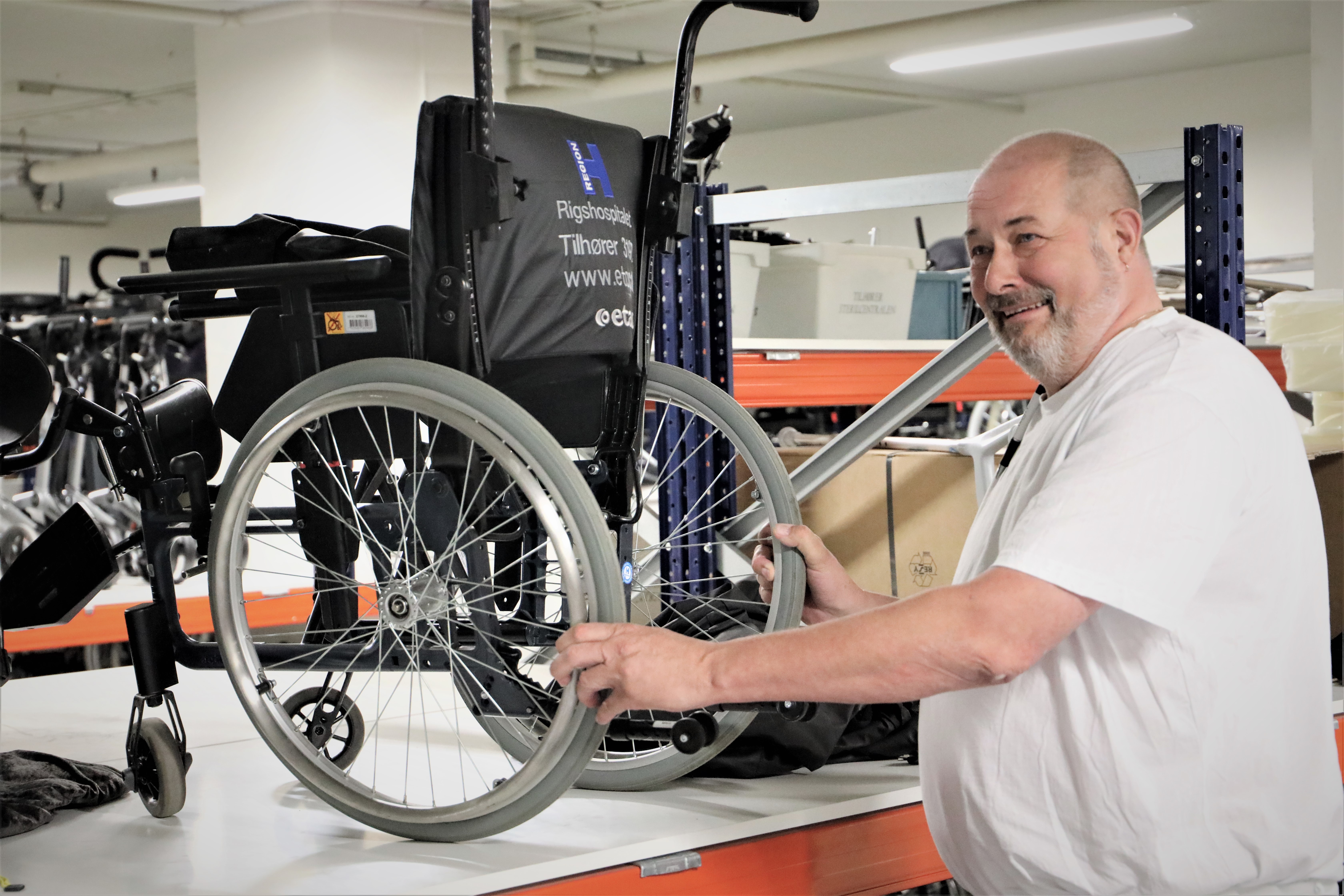After one year of using Columna Flow at Rigshospitalet in Denmark, the day-to-day work of the hospital porters became less stressful, as they each became their own coordinator.
Stressful day-to-day work for porters, with lots of calls disrupting their real work
Communication misunderstandings and unclear descriptions of work assignments
A system that automatically makes tasks available to all relevant employees
From “push” to “pull” effects, where the porters themselves select appropriate tasks using their smartphones
A system that provides a transparent overview of tasks and clear work assignments
Staff assume shared responsibility and work together to tackle tasks
Reduced stress and a better working environment for the porters
Full transparency and documentation of data relating to orders for porter duties and how they are carried out

In the heart of Denmark’s capital city of Copenhagen lies Rigshospitalet – one of Scandinavia's largest hospitals, with 1244 beds. Despite its size and national importance, Rigshospitalet (Danish for “the National Hospital”) used manual procedures to deal with patient transport and other logistics tasks right up until summer 2018. At all times of day and night, the different jobs were allocated and explained via telephone calls between medical staff and porters.
“You have to remember that Rigshospitalet used to run entirely on phone calls from one porter to another – the hospital porters allocated all the different tasks themselves. Depending on which particular organisation the porters reported to within Rigshospitalet, we had one person in our team responsible for receiving all calls and then passing on the assignments,” explains Chief Porter, Kristoffer Hofman.

That’s how it was done until the first steps towards a major change in the porters’ day-to-day work procedures were taken. The Columna Flow task management system was first implemented at the Radiology Clinic, through which a very large number of patients pass every day. The routine work at this clinic may therefore seem hectic. According to the head porter at the Radiology Clinic, Gert Andersen, that’s why the porters working there greatly appreciated replacing their constantly ringing phones with text messages.
“This has made life easier, because now I don’t get interrupted by having to answer calls while I am transporting a patient, for example. The tasks we’re given are pre-defined and just arrive on my phone, making my whole job much easier. In the past, I received lots of calls wanting to clarify who should do what. That doesn’t happen any more, because the phones and the porters are able to coordinate everything themselves,” says Andersen.
According to the deputy head of the Rigshospitalet Service Centre, Lars Buhl, the porters are still getting used to the task management system, which has changed their working day in several ways. But despite the size and complexity of Rigshospitalet, working with the system has got off to a good start.
“The Columna Flow task management system works well at Rigshospitalet. Our ability to document the work has improved significantly, but we are still working to create a mindset among the porters about documenting the things that are not actually registered in the system – by adding comments about tasks that took longer than expected, for example,” explains Buhl. His views are supported by Chief Porter Kristoffer Hofman, who – in addition to the documentation benefits – has also noticed improvements in the working environment for the Rigshospitalet porters.
“The stress factor has shifted, because the phones no longer ring while porters are busy with a task. This means that our porters can keep their full focus on the task at hand and on the patients they are dealing with. When they’re finished with the task they simply pick up the phone and see what assignments have come in,” says Hofman. This also means the porters avoid unnecessary journeys back and forth to the duty room, because the next task always starts from where the previous one ended.

Implementation of Columna Flow also means the close collaboration between porters and nurses has changed. Instead of just passively being tasked with a particular assignment, the porters can now be more proactive in the overall coordination work, because they have a full overview of the tasks that need doing and can select the assignments that are right for them, thus saving both time and walking.
”You could say that each porter has become his own coordinator, because the porters now have an overview of which tasks they have to perform. This makes it much easier to prioritise, so each porter can make best use of his skills and capabilities. When there’s full understanding and maximum clarity in setting up the tasks, collaboration between nurses and porters works great,” explains Columna Flow facilitator at Rigshospitalet, Jesper Christensen.

As with all new systems in a large hospital, it has been necessary to ensure that close, ongoing dialogue between the hospital and Systematic takes place, so the setup can be improved and adapted to the individual situation and hospital. Both Systematic and Rigshospitalet have come a long way in this process, and are optimistic about the system’s future.
“Our experience with Columna Flow as a working tool and a management tool has been positive, because the possibilities for documenting or examining a wide range of procedures are virtually unlimited. That is why we see a lot more opportunities to use the system to support work procedures and document the use of resources etc.,” concludes Lars Buhl.